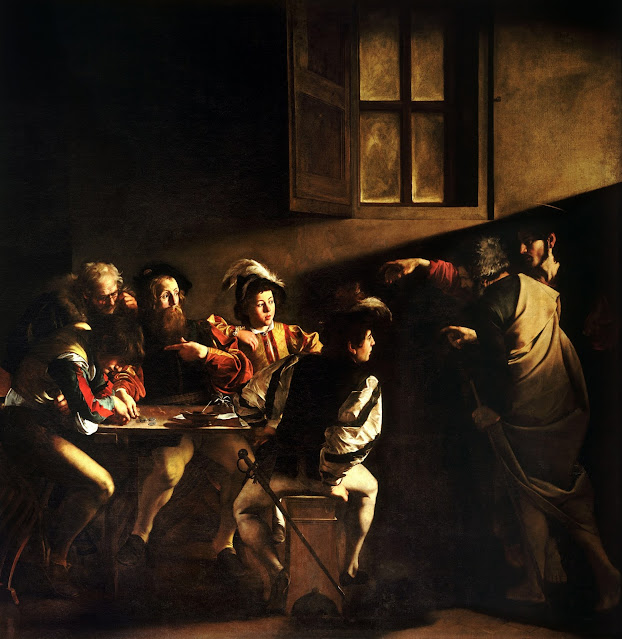The Calling of Saint Matthew by Caravaggio (Interpretation and Analysis)
 |
| The Calling of Saint Matthew Source: Wikimedia Commons |
There are few artists more famous and interesting than Caravaggio. He is often known as the greatest painter of the Baroque movement. The Baroque movement revolved around emotion. Baroque artists sought to capture heightened states of feeling and spiritual exaltation. They achieved this through visual drama, movement, twisting shapes, and intense contrast between shadow and light.
Caravaggio’s art was incredibly effective. It was shocking and unusual for his time, but Caravaggio ensured constant patronage through his talent for conveying believable emotion and drama through substantial, weighty figures. Caravaggio is also famous for his gritty, down-to-earth scenes that featured men and women who were reminiscent of Rome’s petty criminals. In fact, Caravaggio often used the common, “disreputable” people that he met in taverns as models, a fact which scandalized some wealthy, high-class Italians.
The Calling of Saint Matthew is a great example of this aspect of his work. Here, we see a group of men assembled in a tavern scene. The painting depicts the moment in which Saint Matthew becomes a follower of Jesus:
“As Jesus went on from there, he saw a man named Matthew sitting at the tax collector’s booth. ‘Follow me,’ he told him, and Matthew got up and followed him.”
- Matthew 9:9
To the right, we see Christ and Saint Peter entering the room. Christ is barefooted and dressed in ordinary clothes, a far cry from the princely beauty of Renaissance depictions of the Son of God. Christ points toward Matthew; his extended hand is reminiscent of the hand of God in Michelangelo’s Sistine Chapel. This detail is an homage to the great Italian painter, who was an inspiration to Caravaggio. To the left, we see a group of men circled around a table. They gaze at Christ with puzzled expressions while Saint Matthew gestures to himself in shock.
Contemporary viewers found the informality of this painting to be shocking, but they must have also thought it was powerful because it has been considered a masterpiece for centuries. Looking with modern eyes, it is easy to see why this piece is so highly regarded. The Calling of Saint Matthew depicts a timeless scene, a moment of emotional connection between two individuals and the beginning of a life-changing journey.
Disclaimer: I’m not an art historian or an expert on this topic. The above is my opinion, based on my interpretation of my foreknowledge of art and history. If I’ve done any additional research, I’ll note it above.



Comments
Post a Comment